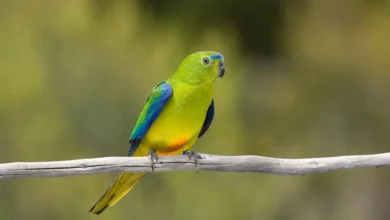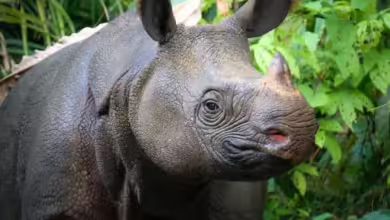Exploring the Enigmatic: Origin and Facts About the Alagoas Foliage-gleaner
Scientific name: Philydor novaesi
Date of extinction: 2019
The Alagoas Foliage-gleaner (Philydor novaesi) is a bird species that captivates not only ornithologists but also conservationists due to its mysterious nature and critically endangered status. Endemic to the northeastern region of Brazil, specifically the state of Alagoas, this bird has an intriguing story that reflects both the beauty and challenges of biodiversity conservation.
Origin and Discovery
The Alagoas Foliage-gleaner was first discovered in 1979 by Brazilian ornithologist Marcos Freiberg and German bird artist Helmut Sick. It was named after Alagoas, the Brazilian state where it was found, and renowned ornithologist Johan Dalgas Frisch contributed to its scientific description. The bird belongs to the Furnariidae family, known for its diverse range of foliage-gleaning species found in South and Central America.
Description and Behavior
This small, brown bird is characterized by its distinctive streaked plumage and relatively short tail. It measures around 16 centimeters in length and is primarily insectivorous, foraging for insects and larvae within the dense foliage of its habitat. Due to its secretive behavior and the dense vegetation it inhabits, observing this species in the wild is challenging, adding to its mystique.
Endangered Status and Conservation Efforts
Despite being only recently discovered, the Alagoas Foliage-gleaner is already considered critically endangered. Its population has declined rapidly due to habitat loss, primarily caused by deforestation and agricultural expansion. Additionally, the bird’s restricted range exacerbates the threats it faces, making it particularly vulnerable to extinction.
Conservation efforts aimed at protecting the Alagoas Foliage-gleaner and its habitat have been implemented by various organizations. These include habitat restoration initiatives, establishment of protected areas, and community-based conservation projects. However, despite these efforts, the species remains on the brink of extinction, highlighting the urgent need for further action.
Hope for the Future
Despite the challenges, there is hope for the Alagoas Foliage-gleaner’s survival. Increased awareness of its plight has led to greater support for conservation efforts, both locally and internationally. Collaborative research projects continue to provide valuable insights into the species’ ecology and behavior, aiding conservation strategies.
Furthermore, ecotourism has the potential to provide alternative sources of income for local communities while promoting conservation awareness and habitat protection. By engaging with local stakeholders and implementing sustainable practices, ecotourism initiatives can contribute to the long-term conservation of the Alagoas Foliage-gleaner and its ecosystem.
Conclusion
The Alagoas Foliage-gleaner represents more than just a bird species; it symbolizes the intricate relationship between biodiversity and human activities. Its plight serves as a reminder of the urgent need to prioritize conservation efforts and preserve the rich tapestry of life on our planet. By working together, we can ensure that future generations have the opportunity to marvel at the enigmatic beauty of species like the Alagoas Foliage-gleaner in their natural habitat.



